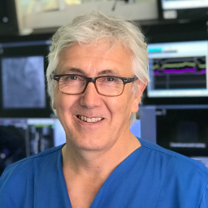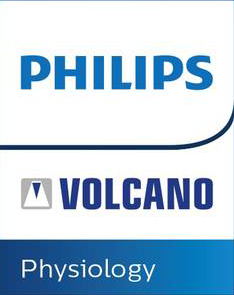23
Mar
2017
09:00
GMT
Live Stream
DEFINE-FLAIR & iFR-SWEDEHEART Outcome Data Release International Meeting
-
Views:
 2209
2209
-
Likes:
 1
1
Overview
During the recent Scientific Sessions of the American College of Cardiology (ACC 2017) the results of two large studies in coronary physiology, DEFINE FLAIR and iFR SWEDEHEART, were presented.
Together, the population of these two studies exceed that of all available trials on FFR. The conclusions are highly relevant to understand the present and future of physiological guidance of coronary revascularisation.
We would like to share with you, within one week of its official presentation at ACC 2017, the results of these two trials at a dedicated international meeting to be held at Hospital Clinico San Carlos, Madrid, which will also include live case transmissions from the same Hospital showing practical use of state-of-art iFR and FFR technology.
Course Directors
Dr Justin E Davies, Consultant Cardiologist, Imperial College NHS Trust, London (GB)
Prof Javier Escaned, Consultant Interventional Cardiologist, Instituto Cardiovascular, Hospital Universitario Clínico San Carlos, Madrid (ES)
Faculty:

Javier Escaned

Justin E Davies
This live stream is supported by

Agenda
Learning Objectives
- The DEFINE FLAIR and iFR SWEDEHEART clinical trial design and outcomes
- To assess how these trial results may influence the use and adoption of coronary physiological assessment
- How expert operators integrate coronary physiology in their daily practice
Target Audience
- Interventional cardiologists
- Interventional cardiology fellows
Faculty Biographies

Javier Escaned
Prof Javier Escaned is Head of the Interventional Cardiology Section at Hospital Clinico San Carlos (Madrid, Spain). He trained as a cardiologist in the United Kingdom (Queen Elizabeth University Hospital, Birmingham and Walsgrave Hospital, Coventry) before moving to the Thoraxcenter/Rotterdam (The Netherlands), where he obtained his PhD degree in 1994.
He has authored over 300 scientific articles, books and book chapters on different aspects of interventional cardiology; his latest contribution is Coronary Stenosis. Imaging, Structure and Physiology, a large textbook endorsed by the European Association of Percutaneous Cardiovascular Interventions/European Society of Cardiology (EAPCI/ESC), with its latest edition published in 2015. His main interests in the field of interventional cardiology include intracoronary imaging and physiology, complex percutaneous coronary intervention including chronic total occlusion recanalisation, and acute coronary syndromes.
He is currently principal investigator in the SYNTAX II and DEFINE FLAIR multicentre studies. Current and recent positions in scientific organisations include co-director of EuroPCR, board member of the EAPCI, nucleus member of the ESC Working Group on Pathophysiology and Microcirculation and board member of the EuroCTO Club.

Justin E Davies
Dr Justin Davies is a Senior Research Fellow and Consultant Cardiologist at Imperial College London. He also completed his undergraduate training and continued on to complete his PhD at Imperial after being awarded a British Heart Foundation research fellowship.
Now a leading clinical academic in the field of interventional cardiology, Dr Davies has pioneered several new techniques, including coronary wave intensity and instantaneous wave-free ratio (iFR). He is also published extensively in the field of hypertension and coronary and large artery physiology.
Key References
1. Use of the Instantaneous Wave-free Ratio or Fractional Flow Reserve in PCI. N Engl J Med. 2017 Mar 17 DOI: 10.1056/NEJMoa1700445
www.nejm.org/doi/full/10.1056/NEJMoa1700445?query=featured_home
2. Instantaneous Wave-free Ratio versus Fractional Flow Reserve to Guide PCI. N Engl J Med. 2017 Mar 17 DOI: 10.1056/NEJMoa1616540
www.nejm.org/doi/full/10.1056/NEJMoa1616540?query=featured_home
3. Assessment of Stable Coronary Lesions. N Engl J Med. 2017 Mar 18 DOI: 10.1056/NEJMe1702728
www.nejm.org/doi/full/10.1056/NEJMe1702728





